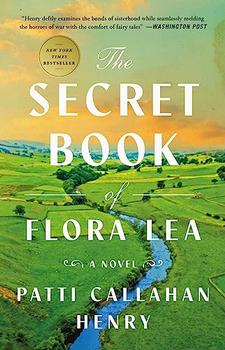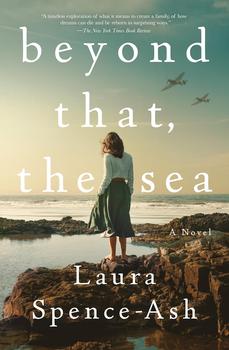Summary | Excerpt | Reading Guide | Reviews | Beyond the book | Read-Alikes | Genres & Themes | Author Bio

A Novel
by Patti Callahan HenryIn Patti Callahan Henry's novel The Secret Book of Flora Lea, sisters Hazel and Flora Lea Linden are sent to Binsey, Oxfordshire at the beginning of World War II, in the mass evacuation of children from London known as Operation Pied Piper. Despite their age difference, fourteen-year-old Hazel and five-year-old Flora are close. To help her younger sister and get them both through the horror of the war, the loss of their father, and the trauma of being evacuated away from their mother, Hazel creates a fantasy woodland world called Whisperwood and the River of Stars, a safe place just for them. Using their imaginations and Hazel's storytelling gifts, they escape through shimmering hidden doors to this magical land, where they can become any creatures they want to be and go anywhere they want to go. But when a tragedy occurs, Hazel abruptly stops telling stories and abandons her dreams of becoming a writer.
Twenty years later, Hazel is about to leave her job at Hogan's Book Shoppe in Bloomsbury, London, for a new position as a specialist in rare books and manuscripts at Sotheby's. On her last day at the bookshop, she is cataloguing a set of new arrivals when among them she finds a new fairy tale by an American author named Peggy Andrews with illustrations by Pauline Baynes, the original illustrator of C. S. Lewis' Narnia books. The first illustration she sees is one of two girls in a magical woodland with a white castle and a river full of stars. The book's title is Whisperwood and the River of Stars, and brings with it the terrible memories and loss of twenty years before. How does the American author know about the secret world of the two English sisters in wartime Oxfordshire?
"Lying, the telling of beautiful things, is the proper aim of art." Oscar Wilde's famous quote is repeated by the character Peggy, the young American author whose book is the catalyst for the events of the 1960 strand of the story. "Beautiful untrue things carry the truth," Peggy says, encapsulating one of the core themes of this novel. Hazel's hunt for the truth as to how and why Peggy knows her childhood secrets takes her and the reader on a compelling, poignant journey involving a number of twists and turns, similar to the winding trail through Whisperwood itself. Sometimes she is led to dead ends, but the spark of hope remains ever alive that what happened in the past may not be what it seemed, and that the truth can be found in the journey of the story itself. As the novel travels back and forth through time, the mystery at its heart is skillfully unraveled, events and memories gradually unlocking the grief and guilt at the center of Hazel's life.
In the 1940 story, the misery, loneliness, and fear of evacuation are powerfully evoked, as is the idyllic Oxfordshire village where Hazel and Flora are taken in by widow Bridie and her teenage son Harry. The reader's immersion in the sisters' world as children enhances our investment in the adult Hazel's journey to uncover the truth about the tragedy that haunts her: our empathy for her deepens as the book progresses and reveals more about the past. Although there are occasions when Americanisms in 1940s England seem out of place (e.g., the children talk about "math" rather than "maths"), this is a minor linguistic point. All the characters are well-drawn and convincing – even those who may not be deserving of sympathy are multi-faceted and their motivations believable if shocking.
Ultimately, it is the importance of stories and the necessity of storytelling that underpin everything in this beautiful, heartrending novel. Stories can bring us together, create an unbreakable bond between people, reveal things we might not otherwise be able to see about ourselves, our lives, and the world we live in; stories, even though imagined, can carry the truth. It is the story Hazel created which makes its way back to her across time and space, and finally leads her to the truth.
![]() This review
first ran in the June 21, 2023
issue of BookBrowse Recommends.
This review
first ran in the June 21, 2023
issue of BookBrowse Recommends.

If you liked The Secret Book of Flora Lea, try these:

by Lucy Ashe
Published 2024
A novel about obsessive love featuring two ballet dancers—identical twin sisters Olivia and Clara Marionetta—with a terrifying climax set in the world of ballet in pre-war London.

by Laura Spence-Ash
Published 2024
A sweeping, tenderhearted love story, Beyond That, the Sea by Laura Spence-Ash tells the story of two families living through World War II on opposite sides of the Atlantic Ocean, and the shy, irresistible young woman who will call them both her own.
Your guide toexceptional books
BookBrowse seeks out and recommends the best in contemporary fiction and nonfiction—books that not only engage and entertain but also deepen our understanding of ourselves and the world around us.